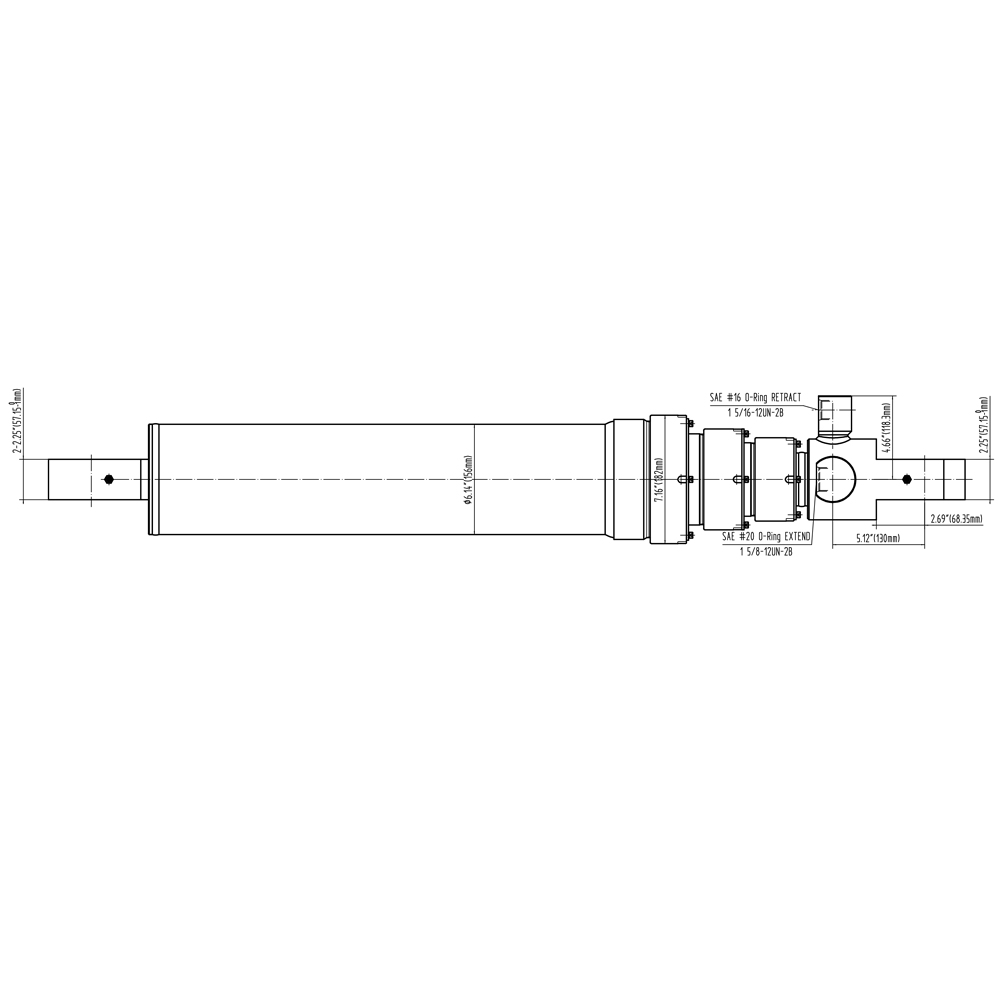Classification of
hydraulic cylinders
The hydraulic cylinder is a hydraulic actuator that converts hydraulic energy into mechanical energy and performs linear reciprocating motion. It has a simple structure and reliable work. When it is used to achieve reciprocating motion, the deceleration device can be eliminated, and there is no transmission gap, and the motion is stable. Therefore, it is widely used in various mechanical hydraulic systems. The output force of the hydraulic cylinder is proportional to the effective area of the piston and the pressure difference between its two sides; the hydraulic cylinder is basically composed of a cylinder barrel and a cylinder head, a piston and a piston rod, a sealing device, a buffer device and an exhaust device. The buffer device and the exhaust device depend on the specific application, and other devices are indispensable.
Classification of
hydraulic cylinders:
There are various structural forms of hydraulic cylinders, and there are many classification methods: according to the movement mode, it can be divided into linear reciprocating movement and rotary swing type; according to the action of hydraulic pressure, it can be divided into single-acting and double-acting; according to structure The form can be divided into piston type, plunger type, multi-stage telescopic sleeve type, rack and pinion type, etc.; according to the installation form can be divided into tie rods, earrings, feet, hinge shafts, etc.
1. Piston type
The single piston rod hydraulic cylinder has a piston rod at only one end. Both the inlet and outlet ports A and B at both ends can pass pressure oil or return oil to achieve two-way movement, so it is called a double-acting cylinder.
The piston can only move in one direction, and its movement in the opposite direction needs to be completed by external force. But its stroke is generally larger than that of piston
hydraulic cylinders.
Piston hydraulic cylinders can be divided into single rod type and double rod type. Its fixing method is fixed by cylinder body and piston rod. There are single-acting and double-acting types according to the action of hydraulic pressure. In a single-acting hydraulic cylinder, the pressure oil is only supplied to one cavity of the hydraulic cylinder, and the cylinder can move in one direction by hydraulic pressure, and the movement in the opposite direction is realized by external force (such as spring force, dead weight or external load, etc.); The movement of the piston in the hydraulic cylinder in two directions is completed by the action of hydraulic pressure through alternating oil in the two chambers.
2. Plunger type
(1) The plunger hydraulic cylinder is a single-acting hydraulic cylinder, which can only move in one direction by hydraulic pressure, and the return stroke of the plunger depends on other external forces or the weight of the plunger;
(2) The plunger is only supported by the cylinder liner without contacting the cylinder liner, so that the cylinder liner is very easy to process, so it is suitable for long-stroke
hydraulic cylinders;
(3) The plunger is always compressed during operation, so it must have sufficient rigidity;
(4) The weight of the plunger is often large, and it is easy to sag due to its own weight when placed horizontally, causing unilateral wear of the seal and the guide, so its vertical use is more advantageous.
3. Swing type
Swing hydraulic cylinder is an executive element that outputs torque and realizes reciprocating motion. There are several forms such as single vane, double vane, and spiral swing. Blade type: The stator block is fixed on the cylinder, and the blade and the rotor are connected together. According to the oil inlet direction, the blade will drive the rotor to swing back and forth. The spiral swing type is divided into single spiral swing and double spiral. Now the double spiral is more commonly used. The linear motion of the piston in the two spiral auxiliary drop
hydraulic cylinders is transformed into a compound motion of linear motion and rotation motion, thereby achieving swing motion.

